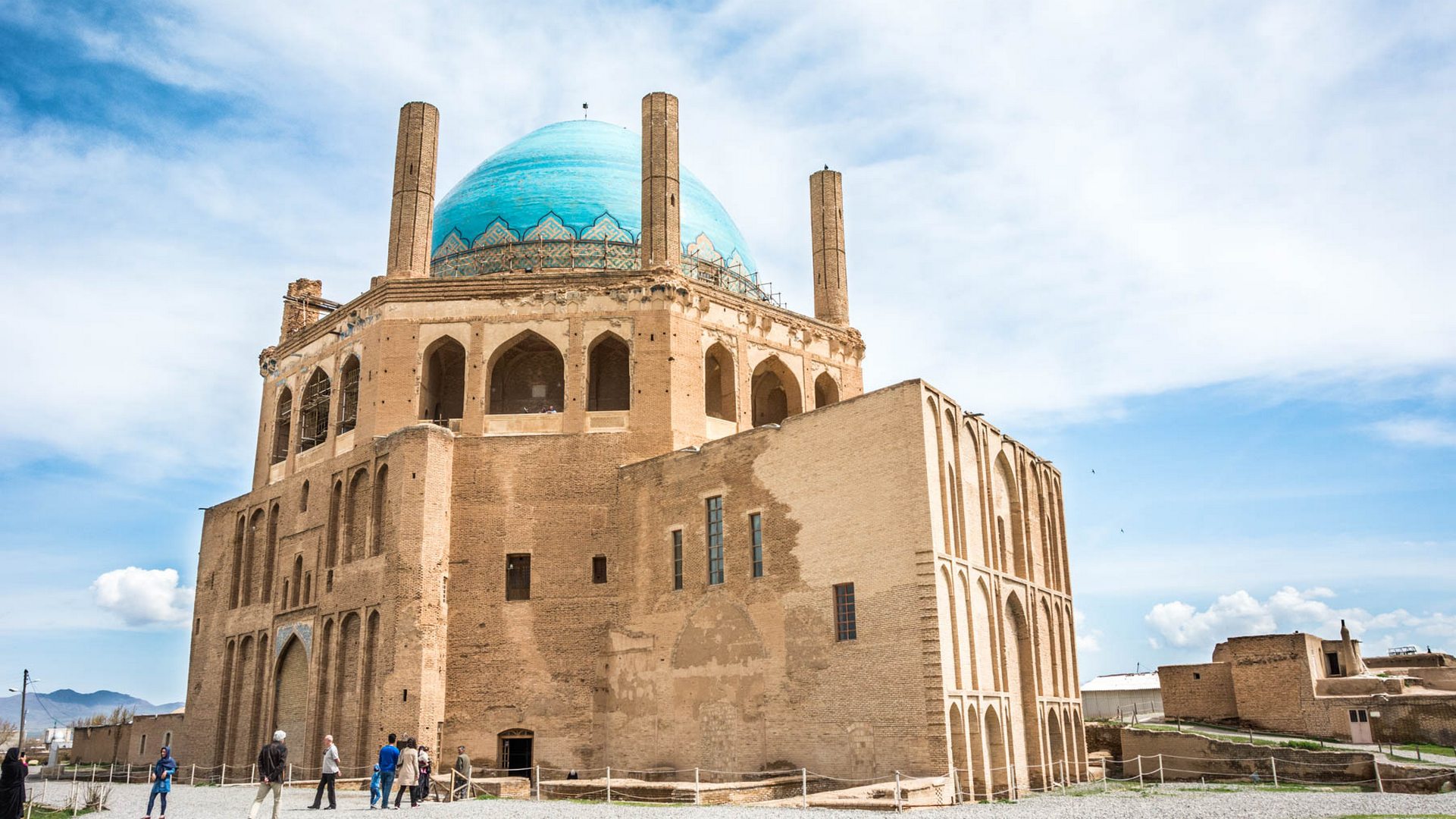Description
Property Name: Dome of Sultaniyeh
Inventory No: 98-241-1
Date of infill of the inventory form: 2009-06-29
Country (State party): Iran
Province: Zanjan
Town: Abhar
Geographic coordinates: 36° 27′ 7″ N
48° 47′ 48″ E
Historic Period: 14th century, 1st half
Year of Construction: 1302-1312
Style: Ilkhanid
Original Use: Mausoleum
Current Use: Mausoleum
Architect: Unknown
Significance
The mausoleum is a key monument in the development of Islamic architecture in Persia, and it is characterised by the innovative design of its double-shelled dome and its interior decoration. Sultaniyeh is one of the outstanding examples of the achievements of Persian architecture and a key monument in the development of its Islamic architecture.
Selection Criteria
ii. to exhibit an important interchange of human values, over a span of time or within a cultural area of the world, on developments in architecture or technology, monumental arts, town-planning or landscape design
iii. to bear a unique or at least exceptional testimony to a cultural tradition or to a civilization which is living or which has disappeared
iv. to be an outstanding example of a type of building, architectural or technological ensemble or landscape which illustrates (a) significant stage(s) in human history
State of Preservation
The Mausoleum of Oljaytu was subject to a restoration campaign from 1969 to 1979. At this time, major attention was given to structural stabilization. From 1994, the Iranian Cultural Heritage Organization has initiated a systematic research and conservation programme on the site. This has involved the conservation and restoration of the interior decoration, as well as the arrangement of the remains of the citadel area. At the moment, the condition of the Mausoleum is satisfactory. It is subject to maintenance and conservation by a permanent team of specialists.
In 1989, a series of archaeological excavations were carried out at the area
surrounding the mausoleum of Oljaytu on the aim of finding the rest of the stone platform
of the monument.
An over-arching programme of research and restoration has been annually carried out since 1994
under the auspices of the Cultural Heritage Organization of Iran.
It was listed in the World Heritage Site in 2005.
References
Bloom, Jonathan M.- Blair, Sheila S., The Grove Encyclopedia of Islamic Art and Architecture Volume 2, New York, 2009.
Hutt, Antony, Islamic architecture Iran 1, London: Scorpion Publications Limited, 1977.
Pope, Arthur Upham, Persian architecture, Soroush Press, Tehran, 1976.
Unesco World Heritage Website, whc.unesco.org
Wilber, Donald N. , The Architecture of Islamic Iran, Greenwood Press, New York, 1969.


